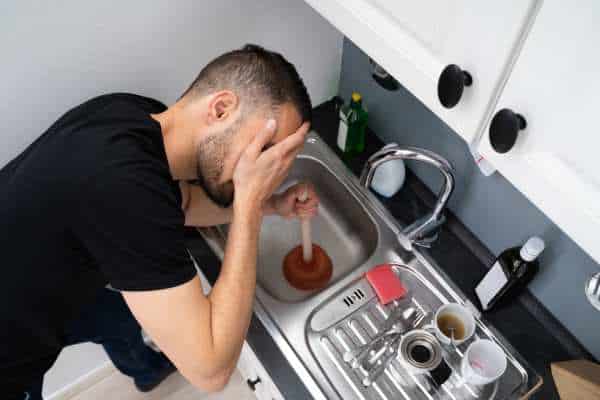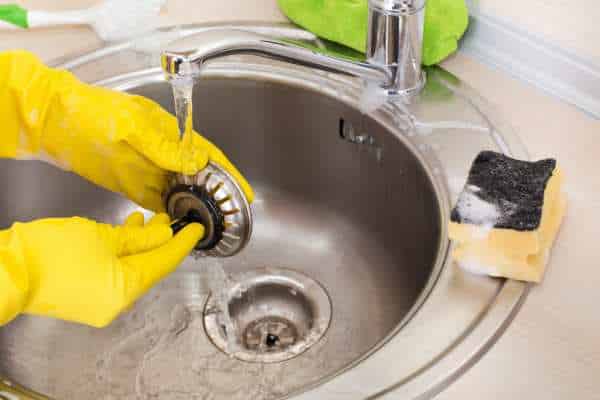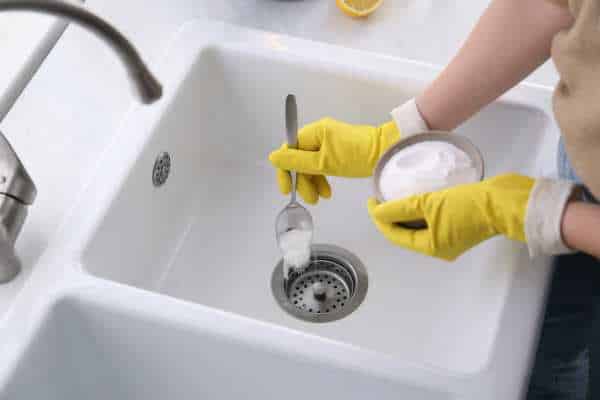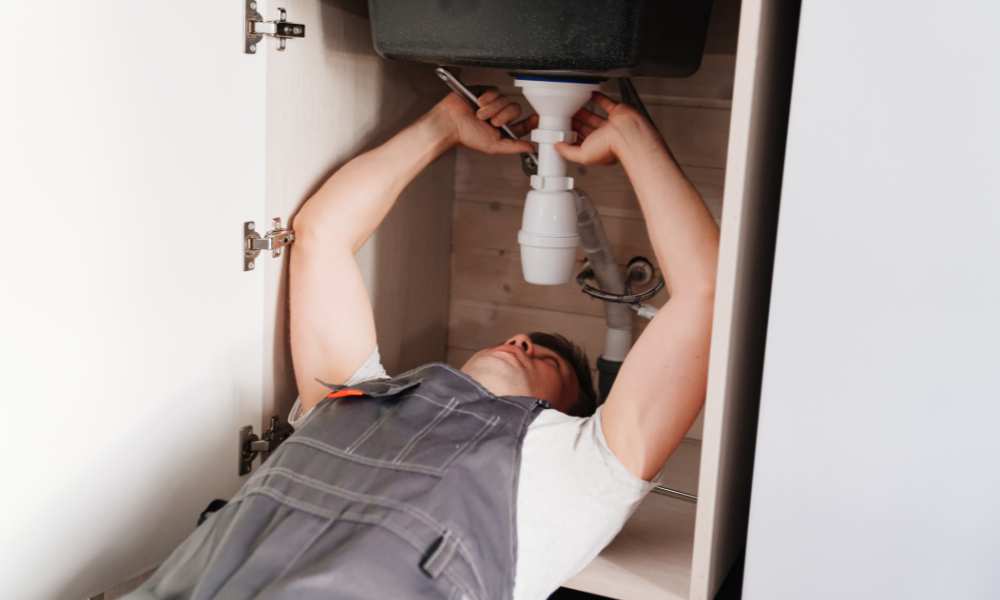A clogged kitchen sink can disrupt your daily routine and create an unwelcome mess in your home’s heart—the kitchen. Learning how to clean a kitchen sink drain is essential for maintaining hygiene and ensuring smooth operation. This guide offers practical, easy-to-follow steps to effectively clear and maintain your sink’s drain, preventing the headaches of future clogs. From natural remedies to essential tools, we’ll cover everything you need to tackle this task confidently. Whether you’re dealing with unpleasant odors or a stubborn blockage, our expert tips will restore your kitchen sink to optimal functionality, keeping your cooking space pristine and welcoming.
Identifying Common Signs of a Clogged Sink Drain

Recognizing the signs of a clogged sink drain early can save you from more serious plumbing issues. Slow water drainage, water backing up, unpleasant odors, and gurgling sounds coming from the drain are clear indicators. If you notice water pooling around the drain while the sink should be emptying, it’s likely you have an obstruction. These symptoms suggest it’s time to clean out the drain before the blockage worsens, leading to potential overflows and water damage. Addressing these signs promptly ensures your kitchen remains functional and hygienic, averting the inconvenience of more extensive repairs.
Materials and Tools Needed for Cleaning Your Sink Drain
To effectively clean your kitchen sink drain, gather essential materials and tools beforehand. You’ll need baking soda, white vinegar, boiling water, a plunger, and a plumber’s snake. Optional items include rubber gloves to protect your hands and a bucket to catch any spillage. For those preferring chemical cleaners, ensure they are suitable for your plumbing. A flashlight can also be helpful for better visibility under the sink. Having these tools and materials at hand will streamline the cleaning process, making it efficient and less of a hassle. This preparation ensures you can address any type of clog quickly, minimizing damage and maintaining your sink’s functionality.
Step-by-Step Guide to Cleaning a Kitchen Sink Drain

Begin by removing any visible debris from your drain. Next, pour a mixture of hot water and dish soap down the sink to loosen grime. For a deeper clean, follow up with a combination of baking soda and white vinegar, which will cause a natural, effervescent reaction that helps break down stubborn residue. After letting it sit for 10 minutes, flush the drain with boiling water to clear out any remaining clogs. For tough blockages, use a plunger or a plumber’s snake to dislodge the debris. Regularly performing these steps will keep your kitchen sink drain clear and fully operational, preventing disruptive clogs and maintaining cleanliness.
Natural Cleaning Solutions for Sink Drains

To maintain a clean and odor-free kitchen sink drain naturally, consider using everyday household items like baking soda and vinegar. Start by pouring a cup of baking soda directly into the drain, followed by an equal amount of white vinegar. The combination causes a fizzing action that helps break down grease and grime. After letting it sit for an hour, flush the drain with boiling water to clear out any residue. This eco-friendly method not only cleans effectively but also avoids the harsh chemicals found in commercial cleaners, making it a safe choice for homes with pets or children.
How to Use Chemical Cleaners Safely and Effectively
When opting for chemical cleaners to clear your kitchen sink drain, safety is paramount. Ensure the area is well-ventilated by opening windows or using an exhaust fan to avoid inhaling fumes. Always wear gloves and goggles to protect your skin and eyes, and carefully read the product’s instructions before use. Pour the recommended amount slowly to prevent splashes, and never mix different chemicals, as this can cause dangerous reactions. After applying the cleaner, wait the specified time before flushing the drain with plenty of hot water. Regular use of these cleaners can help maintain a clear sewer, but remember to use them sparingly to minimize environmental impact.
Preventing Future Clogs in Your Kitchen Sink Drain

To prevent future clogs in your kitchen sink drain, regular maintenance is key. Start by avoiding the disposal of grease, coffee grounds, and food scraps down the sewer. Instead, opt for a compost bin or trash can. Using a mesh strainer can also catch debris before it causes problems. Additionally, flushing your sewer with hot water weekly helps dissolve any lingering oils or fats. For an extra level of prevention, pour a mixture of baking soda and vinegar down the drain monthly, followed by hot water, to keep it clear and odor-free. These simple habits will keep your kitchen sink flowing smoothly and reduce the need for frequent, more intensive cleanings.
DIY Tips for Maintaining a Clean Drain
To keep your kitchen sink drain in top condition, regular maintenance is key. Start by running hot water through the drain after each use to prevent oil and food particles from building up. Once a week, pour a mixture of baking soda and white vinegar down the sewer, let it sit for an hour, and then flush with boiling water. This natural combination works wonders in breaking down residue without harsh chemicals. Additionally, consider using a sewer strainer to catch debris before it causes a blockage. These simple DIY tips can help you avoid costly repairs and ensure your sink remains clean and functional.
The Role of a Plunger and Plumber’s Snake in Drain Cleaning

Using a plunger and plumber’s snake can be highly effective for clearing clogs in your kitchen sink sewer. A plunger creates pressure that helps loosen any blockage, making it easier to remove. For more stubborn clogs, a plumber’s snake, or sewer auger, is invaluable. This flexible tool can reach deep into pipes, breaking up or retrieving obstructions that are otherwise unreachable. By incorporating these tools into your regular cleaning routine, you can ensure your sink remains free-flowing and hygienic. Understanding their proper use can save you from the inconvenience and potential cost of professional plumbing services.
When to Call a Professional: Signs You Need Expert Help
Sometimes, despite your best efforts, a kitchen sink drain requires professional attention. If you notice persistent bad odors, recurring clogs, or water backing up despite thorough cleaning, it’s time to call in an expert. Plumbers can address deeper issues that household remedies cannot reach, such as obstructions in the main sewer line or damaged pipes. Additionally, if you hear unusual noises when the water drains or see water pooling in other areas, these are signs of potentially serious plumbing problems that merit immediate professional evaluation. Delaying can lead to more extensive and costly repairs, so seeking expert help early is crucial for maintaining your home’s plumbing health.
The Impact of Regular Drain Cleaning on Plumbing Health
Regular maintenance of your kitchen sink drain not only prevents inconvenient clogs but also prolongs the lifespan of your plumbing system. By keeping the sewer clean, you minimize the risk of severe blockages that can lead to costly repairs. This practice ensures that water flows freely, reducing stress on pipes and connections. Additionally, it helps eliminate unpleasant odors and bacterial growth, contributing to a healthier and more hygienic kitchen environment. Embracing a routine cleaning schedule will safeguard your plumbing’s efficiency and functionality, ultimately saving you time and money in the long run.
Conclusion
Mastering how to clean a kitchen sink drain is an invaluable skill that can greatly enhance your kitchen’s functionality and hygiene. Regularly clearing out debris and build-up will prevent clogs, extend the life of your plumbing, and ensure your kitchen remains a clean, pleasant space for cooking and gathering. Use the tips and techniques outlined in this guide to maintain a free-flowing sewer, saving you from potential hassles and costly repairs. Remember, a little preventative care goes a long way in keeping your kitchen sink in top condition. Embrace these practices to keep your sink pristine and fully operational year-round.

